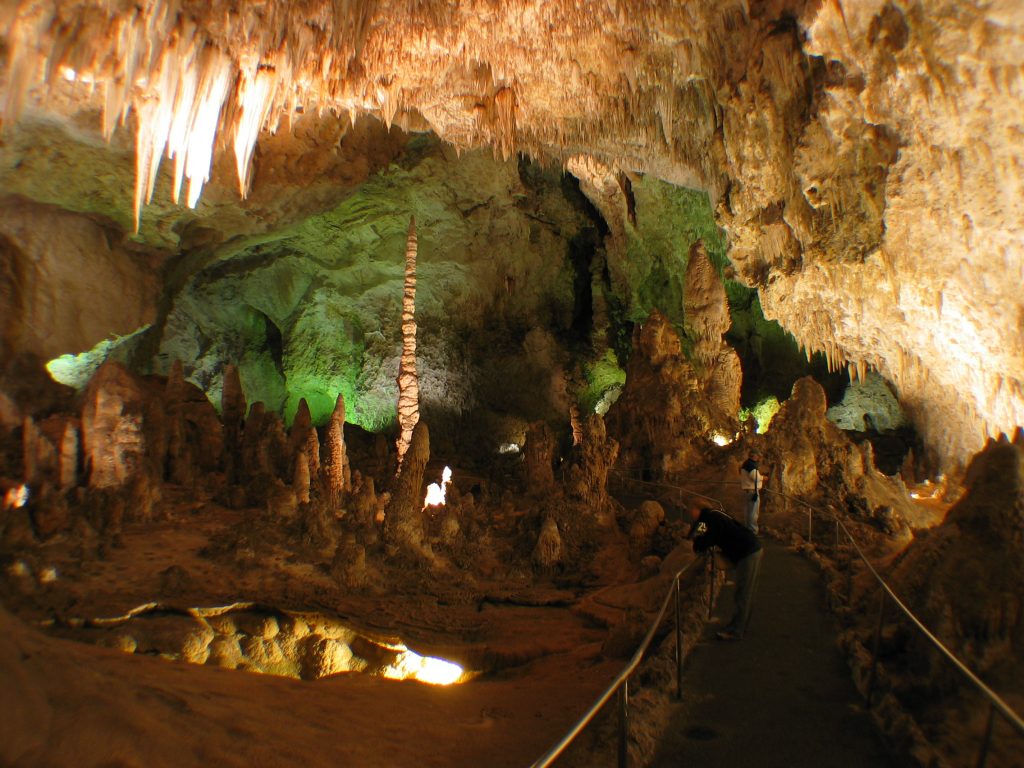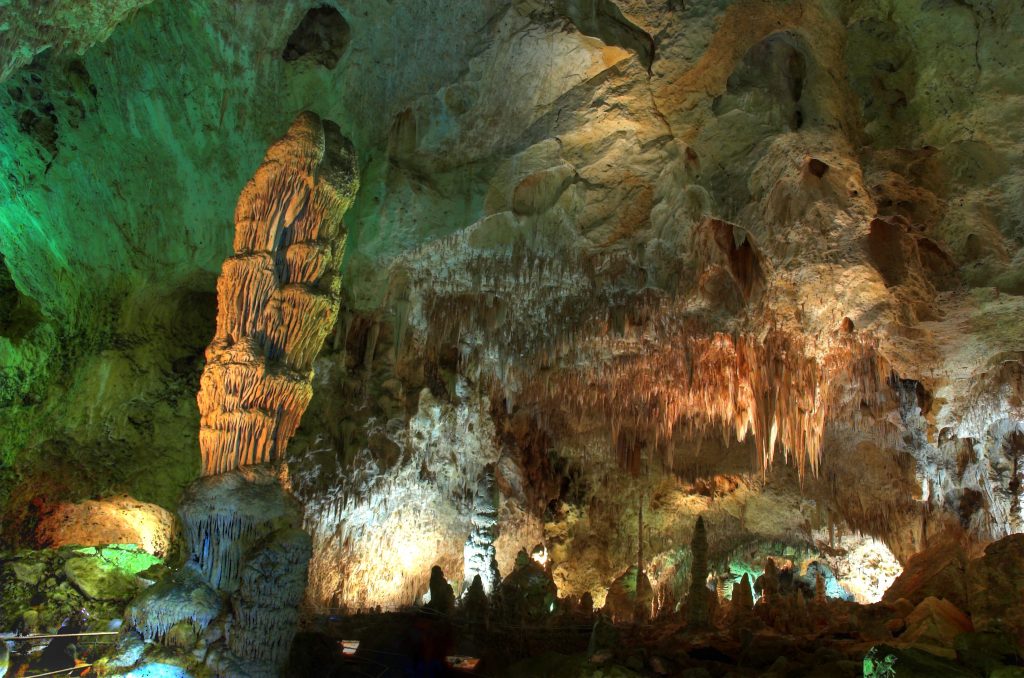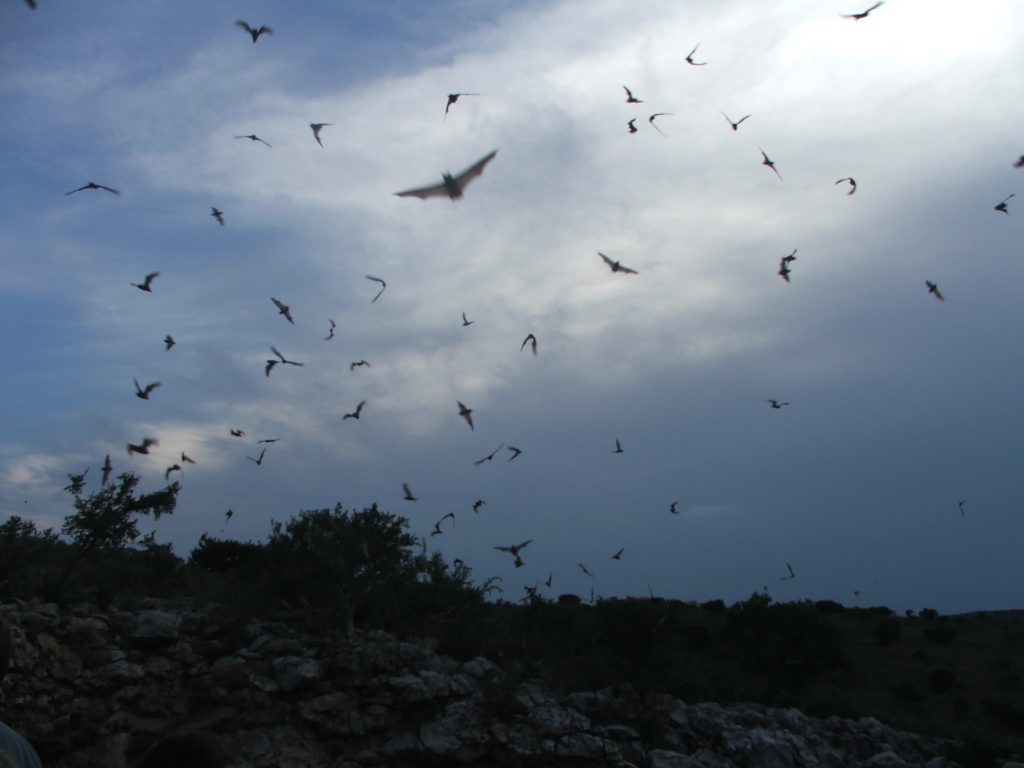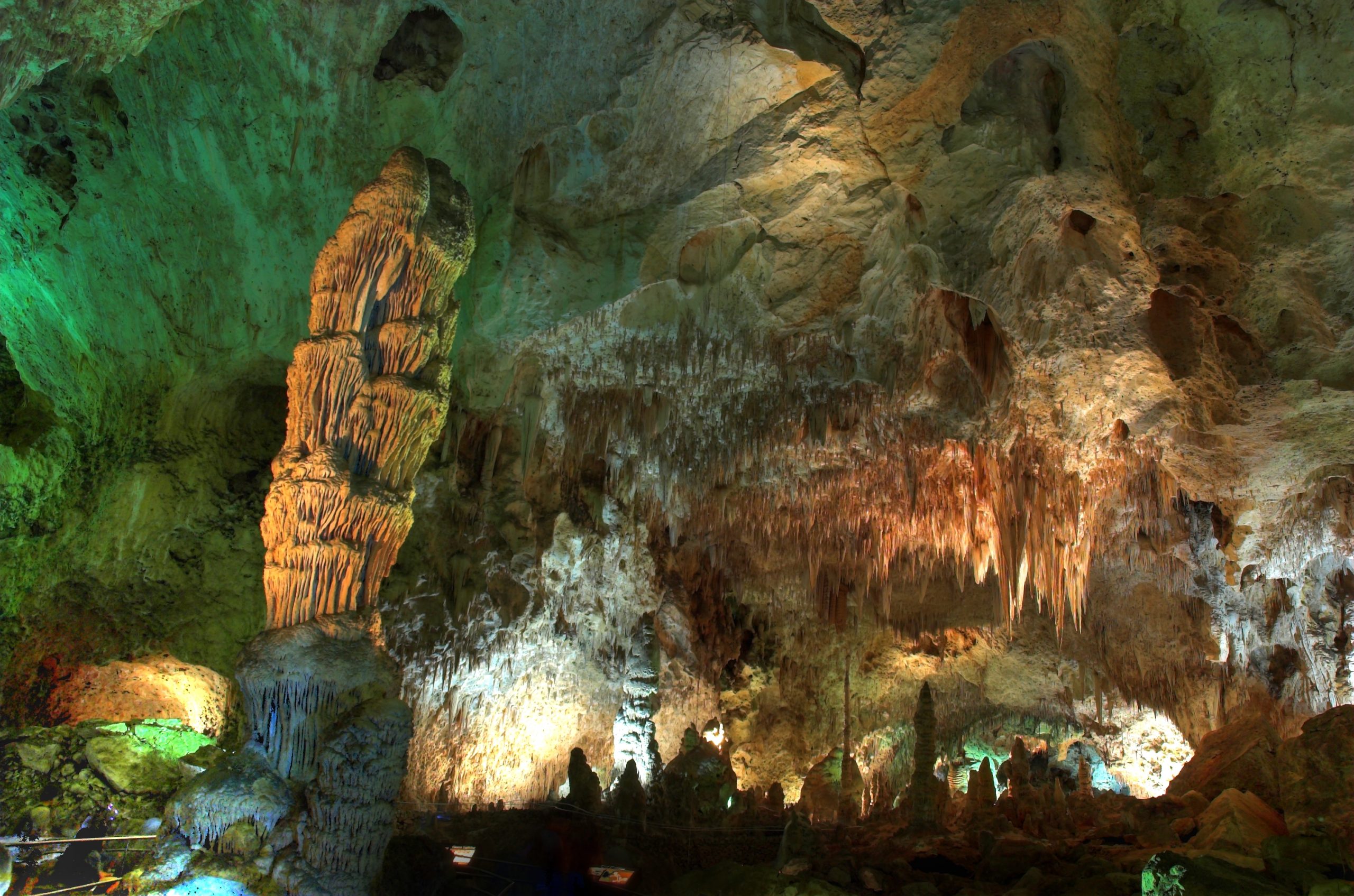[vc_row][vc_column width=”1/1″][text_output]
ANSWERED QUESTION
Carlsbad Caverns an underground wonder

As part of our Curious New Mexico project, we received several questions about Carlsbad Caverns, making it one of our most popular topics to date. News Port reporter Lena Guidi checked in with cave experts and geologists who explain how the cave formations are made, which ones can be visited and why they are important to scientists.
1. What is Carlsbad Caverns?
Carlsbad Caverns National Park is located in Southeastern New Mexico on the Guadalupe mountains, which are exposed remnants of the ancient Capitan coral reef. The mountain range is filled with fossils of sea life preserved in the limestone — but this record of ancient life isn’t what makes this region most famous. It’s the magnificent caves that draw over 300,000 visitors annually.
“The caves in New Mexico are some of the most beautifully decorated caves in the world, and many of those are found in the Guadalupe mountains near Carlsbad,” said Victor Polyak, a speleologist (or cave expert) at UNM’s Department of Earth and Planetary Sciences. Of the 119 caves in the park, most of which are not accessible to the public, the Carlsbad Cavern is the most well-known due its large size, accessibility, and elaborate rock formations.
“It’s got a number of really special features compared with other caves that I’ve been to,” said Kelly Norwood, a geologist at White Sands Missile Range and cave enthusiast. She said that some notable features of the cave include its spacious main room, known simply as the Big Room, and the large population of Mexican freetail bats.
Other caves at Carlsbad Caverns National Park open to the public include Spider Cave and Slaughter Canyon Cave. The park is also home to two districts that are listed on the National Register of Historic Places.
2. How was Carlsbad Caverns formed?
Polyak said the caves at Carlsbad Caverns National Park are important not just for their natural beauty, but for their scientific value. The process that formed them is seen in only about ten percent of the limestone caves in the world, making them especially interesting for researchers.
“Most caves are thought to form by carbonic acid that ultimately comes from rainfall and snowmelt,” Polyak said. The water percolates through soil, forming carbonic acid as it comes into contact with vegetation, and then seeps into limestone, corroding it gradually.
Eventually, the surface layer of limestone collapses, forming sinkholes, which allow the water to carve out streams, rooms, and tunnels underground. These caves are known as “epigenic,” whereas the caves at Carlsbad Caverns are “hypogenic.”
“Here in Southern New Mexico in the Guadalupes, these caves are formed from a weak sulfuric acid that is thought to come from microbes in oil and groundwater,” Norwood said. In this case, hydrogen sulfide from below mixes with rainwater to form sulfuric acid, which is stronger than carbonic acid. The cave is then eroded from inside the limestone layers, rather than from above.
The discovery of this process — known as sulfuric acid speleogenesis — was relatively recent, and Carlsbad Caverns contains some of the most well-preserved evidence of its formation.
“Because there are so many different byproducts of cave genesis preserved in these caves, cave scientists from all over the world come here to look at and study them,” Polyak said.

Photo by SamuraiCatJB on Flickr
3. How old is Carlsbad Caverns?
A research team led by Polyak in 1998 determined that the ages of several hypogenic caves in the Guadalupe Mountains ranged from 3.9 to 11.3 million years old.
“The Big Room level in Carlsbad Cavern, for instance, formed four million years ago,” he said. To reach this conclusion, the team tested a mineral called alunite, which is a residue of sulfuric acid dissolution found on the cave walls, to determine the age of the cavern.
“Because the alunite is a by-product of cave genesis, alunite ages represent the absolute ages of formation of the hypogene caves,” the Science journal on Polyak’s research says. The age of the alunite was tested using a radiometric dating method called potassium-argon dating, which measures the proportion of radioactive potassium to radioactive argon in a sample.
The ages determined from testing alunite are much more accurate than previous methods, which relied on testing minerals such as calcite. From this, scientists could only determine how long those specific deposits had been in the cave, not the age of the cave itself.
4. Can the public go into the caves?
Carlsbad Caverns National Park is open to the public every day of the year except Thanksgiving, Christmas, and New Year’s Day. On certain other national holidays, listed on the National Park Service website, entrance to Carlsbad Cavern is free.
Norwood suggests that first-time visitors begin by going to the Big Room. The general entrance fee covers a self-guided tour of most of Carlsbad Cavern, which Norwood said can be entered two ways: through the natural walkway, and through an elevator from the visitor’s center above ground.
“I would definitely recommend walking in,” she said. “It’s quite an impressive passage that you go through, and you can also get closer to the bats when you’re coming out of the walkway.” In addition to the self-guided tour, there are numerous ranger-guided tours available for routes within Carlsbad Cavern that vary in difficulty.
Park rangers also lead tours through Spider Cave and Slaughter Canyon Cave, both of which are considered more strenuous “wild cave tours.” However, Norwood urges caution on these tours due to the increased risk of injuries such as cuts, falls, or bat bites.
“Caves can be a dangerous place if you don’t know what you’re doing,” she said. She recommends that anyone seriously interested in caving in this region join the Mesilla Valley Grotto, a cave club led by the National Speleological Society.
“They do a lot of caving down in the Guadalupes near Carlsbad, and in the park as well, and they help teach people how to practice it safely,” Norwood said.
Another popular activity at Carlsbad Cavern is the bat flight, where visitors can watch thousands of bats leave the cave every evening to begin their nocturnal hunt for food.
“The bat flight at Carlsbad Caverns is spectacular,” Polyak said. The bat flight is a free event. Periodically, the park also hosts Star Parties, where the public can observe the night sky without light interference from nearby cities or towns.

5. What kind of rock formations can I see at Carlsbad Caverns?
In addition to byproducts that are useful for studying the age of the caves, the creation of Carlsbad Caverns left behind large and elaborate mineral formations. These formations, known as speleothems, are typically made of calcite that resulted from the interaction of carbonic acid and limestone.
“There are numerous varieties of speleothems that form in the cave environment, but carbonate dripstones and flowstones are the most common and voluminous,” Yemane Asmerom — head of the radiogenic isotope lab at UNM — wrote for the Encyclopedia of Earth Sciences in 2009.
Dripstones include perhaps the two most well-known cave formations — stalactites and stalagmites. They form when water drips through the ceilings of caves, gradually building up into stalactites. Sometimes, the calcite water drips to the floor, creating stalagmites. When they fuse together, it is known as a column.
Flowstones are formed in a similar process, but the water drips down walls or other structures in the cave, forming encrustations of calcite. While these are the most common, there are numerous other minerals and structures at Carlsbad Caverns.
“The formations are usually calcite, but there are some other minerals that are found in Carlsbad,” Norwood said. “For examples, where there’s sulfur in a cave, there’s gypsum.”
Large deposits of gypsum, a byproduct of sulfuric acid in contact with limestone, can be found in the hypogenic caves at Carlsbad Caverns. Lechuguilla Cave (not open to the public) features massive white chandeliers made from gypsum crystals.
There are numerous other formations throughout the park in shapes, sizes, and colors that give the caves an other-wordly quality — some examples include the self-descriptively named soda straws, curtains, popcorn, and cave pearls.[/text_output][share title=”Share this Post” facebook=”true” twitter=”true” google_plus=”true” linkedin=”true” pinterest=”true”][/vc_column][/vc_row]
